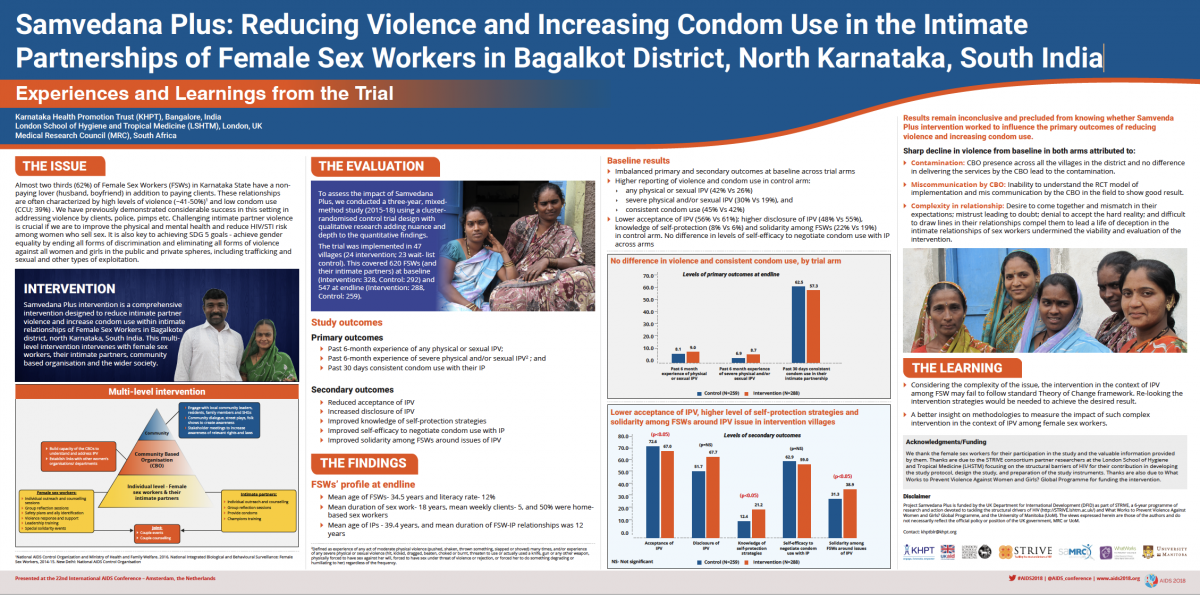There is mixed evidence on whether women’s economic and social empowerment is beneficial or not for reducing intimate partner violence (IPV).
Given this, the authors explored the relationship between women’s empowerment and IPV risk by analysing data from baseline interviews with married women from the Intervention with Microfinance and Gender Equity (IMAGE) longitudinal study in rural South Africa. IMAGE combines a poverty-focused microfinance program with a gender-training curriculum.
Findings
Evidence brief: The EMPOWER study: An evaluation of a combination HIV prevention intervention including oral PrEP for adolescent girls and young women in South Africa and Tanzania
This evidence brief provides a summary and presents the key findings from the EMPOWER Study, conducted in Johannesburg, South Africa, and Mwanza, Tanzania. The study asked:
Is it feasible, acceptable and safe to integrate responses to gender-based violence and harmful norms into an HIV prevention programme offering pre-exposure prophylaxis (PrEP) for adolescent girls and young women (AGYW) aged 16-24 years?
Changing the norms that drive intimate partner violence: findings from a cluster randomised trial on what predisposes bystanders to take action in Kampala, Uganda
Despite widespread calls to end violence against women, there remains limited evidence on how to prevent it. Community-level programmes seek to engage all levels of the community in changing norms that drive intimate partner violence (IPV). However, little is known about what predisposes ordinary people to become active in violence prevention.
Infographic: Violence against women
Violence against women is a human rights violation and global pandemic. This new infographic―developed with support from the United States Agency for International Development by the Interagency Gender Working Group’s Gender-Based Violence Task Force―illustrates the multiple ways in which violence against women harms individuals, communities, countries, and the world, and outlines actions that governments, the private sector, and funders can take to prevent and respond to violence against women.
Evidence brief: Samvedana Plus: Reducing Violence and Increasing Condom Use in the Intimate Partnerships of Female Sex Workers in Bagalkote District, North Karnataka, South India
Previous interventions in India successfully reduced violence against female sex workers (FSWs) by 'non-intimate' partners such as clients and police, but addressing violence by their non-paying intimate partners (husband, boyfriend) has been challenging.
Results from the EMPOWER randomised trial - Sinead Delany-Moretlwe
PrEP is a new HIV prevention technology that is likely to benefit adolescent girls and young women (AGYW) in Eastern and Southern Africa at substantial risk for HIV infection. Strategies to support PrEP uptake and address barriers to consistent use are urgently needed. As part of the EMPOWER study, a randomised controlled trial was conducted to evaluate whether empowerment clubs increase PrEP uptake and continuation among AGYW in South Africa and Tanzania.
Violence experience by perpetrator and associations with HIV/STI risk and infection: a cross-sectional study among female sex workers in Karnataka, south India
Female sex workers (FSWs) experience violence from a range of perpetrators, but little is known about how violence experience across multiple settings (workplace, community, domestic) impacts on HIV/sexually transmitted infection (STI) risk. This paper examines whether HIV/STI risk differs by the perpetrator of violence.
Integrating violence screening and support for young women accessing PrEP in South Africa and Tanzania : Experiences from the EMPOWER study - Manuela Colombini
The presentation in this Learning Lab was also given at the AIDS2018 conference by Manuela Colombini. Download the presentation here
Although we know that partner violence may undermine oral PrEP use, evidence is scarce on how to support PrEP use while decreasing vulnerability to violence among adolescent girls and young women (AGYW).
Samvedana Plus: Reducing Violence and Increasing Condom Use in the Intimate Partnerships of Female Sex Workers in Bagalkot District, North Karnataka, South India
This poster was originally presented at the AIDS2018 Conference.

Almost two thirds of female sex workers (FSWs) in Karnataka State have a non-paying lover (husband, boyfriend) in addition to paying clients. These relationships are often characterized by high levels of violence and low condom use.
How does partner violence affect HIV treatment during pregnancy? - Abigail Hatcher
While intimate partner violence has long been understood as a factor driving HIV risk, only recently has research and policy begun to recognise its influence in the lives of women already living with HIV. Partner violence may be particularly challenging during pregnancy, and skipping HIV medicine at this time can be especially risky for the health of the woman and her infant. This Learning Lab highlights recent work in measuring and addressing partner violence within the cascade of prevention of mother-to-child HIV transmission (PMTCT).



